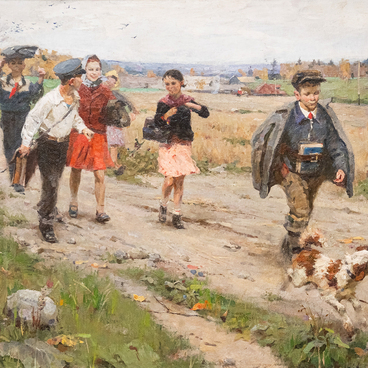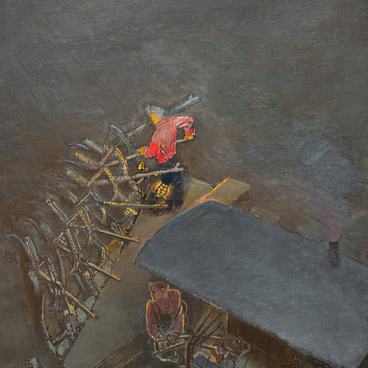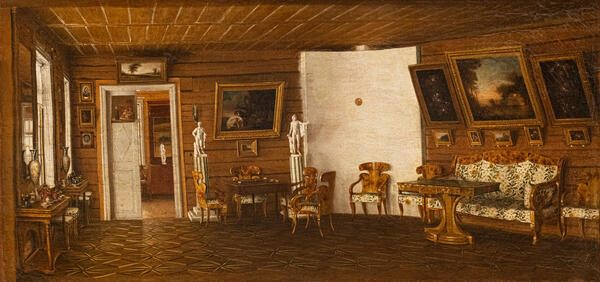This work goes in pair with another work by the same painter — “Living Room”.
Both interiors were located in the Bogdanovskoye estate that belonged to the noble family of the Filosofovs. This work of art was probably created by Alexander Alexandrovich Alekseyev — one of the students of the painter, lithographer, engraver, and teacher Alexey Gavrilovich Venetsianov. Presumably, the painting was done when the mentor and his students visited the estate.
Alexander Alekseyev was a serf boy and lived in the village of Lubenki, Kashinsky district, Tver Governorate. Soon he became an apprentice to Nikifor Stepanovich Krylov — a painter and iconographer of an itinerant artel. The representatives of this artel painted the iconostasis located in the estate of the Putyatin princes.
After that, together with Nikifor Krylov, Alekseyev began studying under Alexey Gavrilovich Venetsianov, who noticed the gifted young man in April 1825. Such a turn in Alekseyev’s life became possible because the estate of Alexey Gavrilovich Venetsianov was located near both his hometown and the estate of the Putyatin princely family in the Tver Governorate.
After Alexander Alekseyev had become a student of the founder of Russian genre painting, he got the opportunity to turn his life around. In 1826, he became a fellow of the Imperial Society for the Encouragement of the Arts and a student of the Saint Petersburg Academy of Arts.
In 1827, Alekseyev received the silver medal of the Academy. In 1829, he was awarded a gold medal for the painting “Perspective View of Venetsianov’s Studio”, which was shown at the exhibition of the Academy in 1827.
In 1829, Alekseyev painted the image of the Mother of God “Joy of All Who Sorrow” for the chapel of the Obukhov Hospital. In 1830, he exhibited five portraits at the Academy: three male, one female and one child portrait titled “Girl with a Rose”.
According to the review of Apollon Nikolayevich Mokritsky, Academician of painting and another student of Alexey Venetsianov, Alexander Alekseyev painted well from life, but he was especially good at copying the works of old masters.
Later in life, Alexander Alekseyev worked as a drawing teacher at educational institutions in the Pskov, Arkhangelsk, and Olonets governorates. He was also employed at the Pskov governorate gymnasium, where he taught penmanship, drawing, and draftsmanship.
In 1832, he was emancipated from serfdom and
received the title of a free artist.







